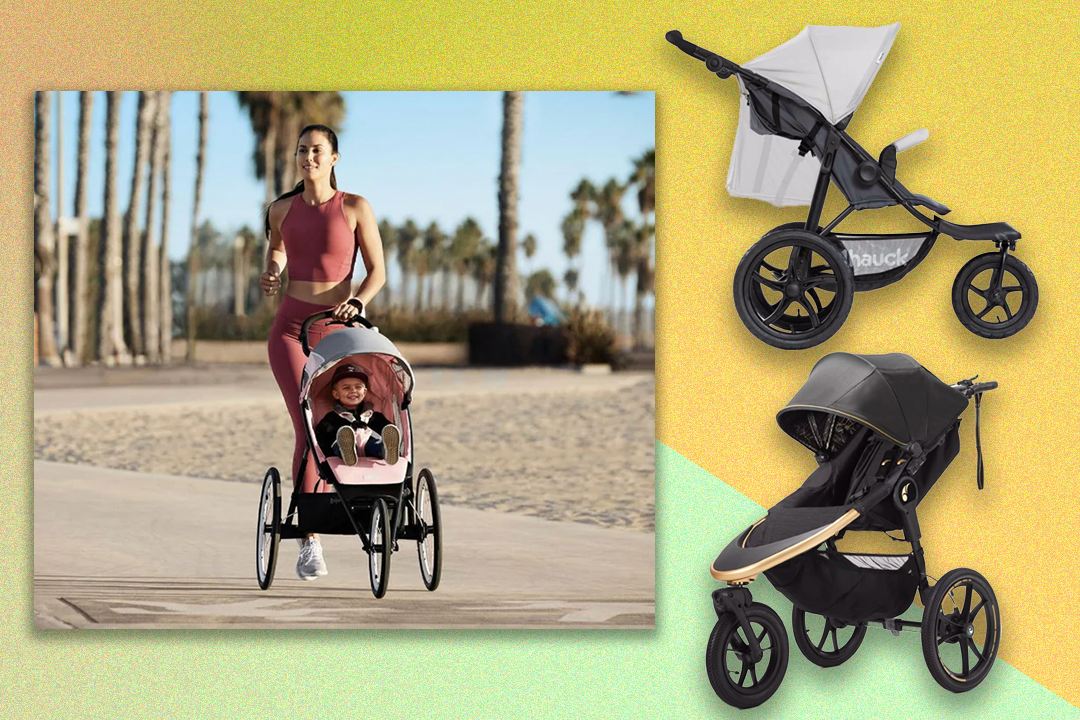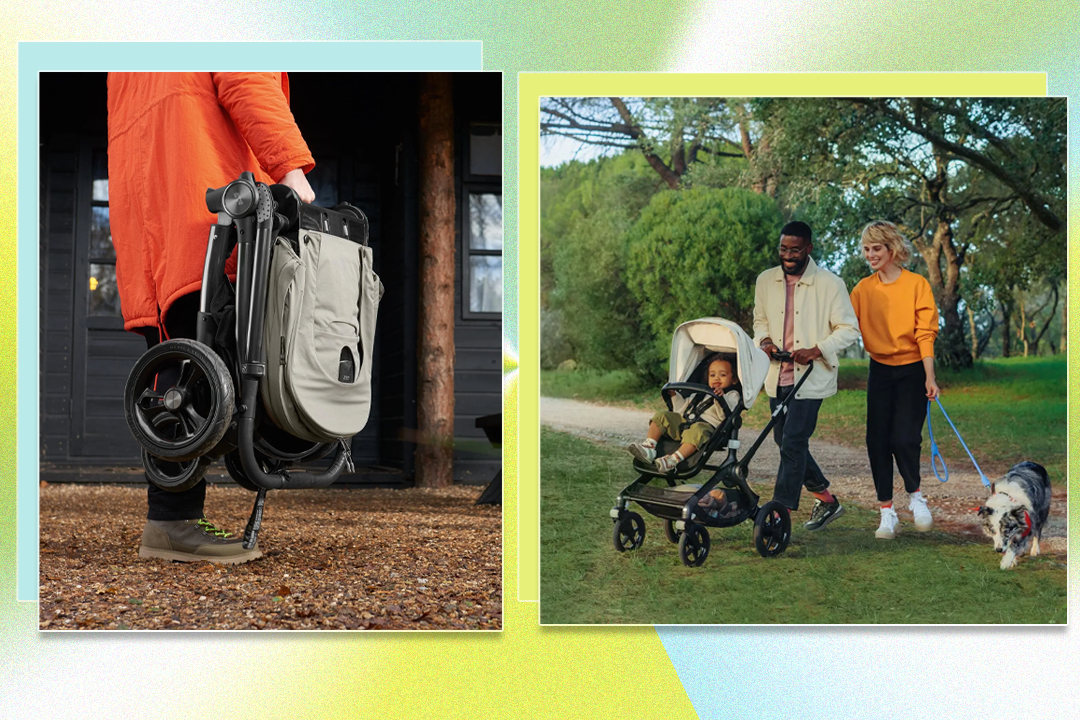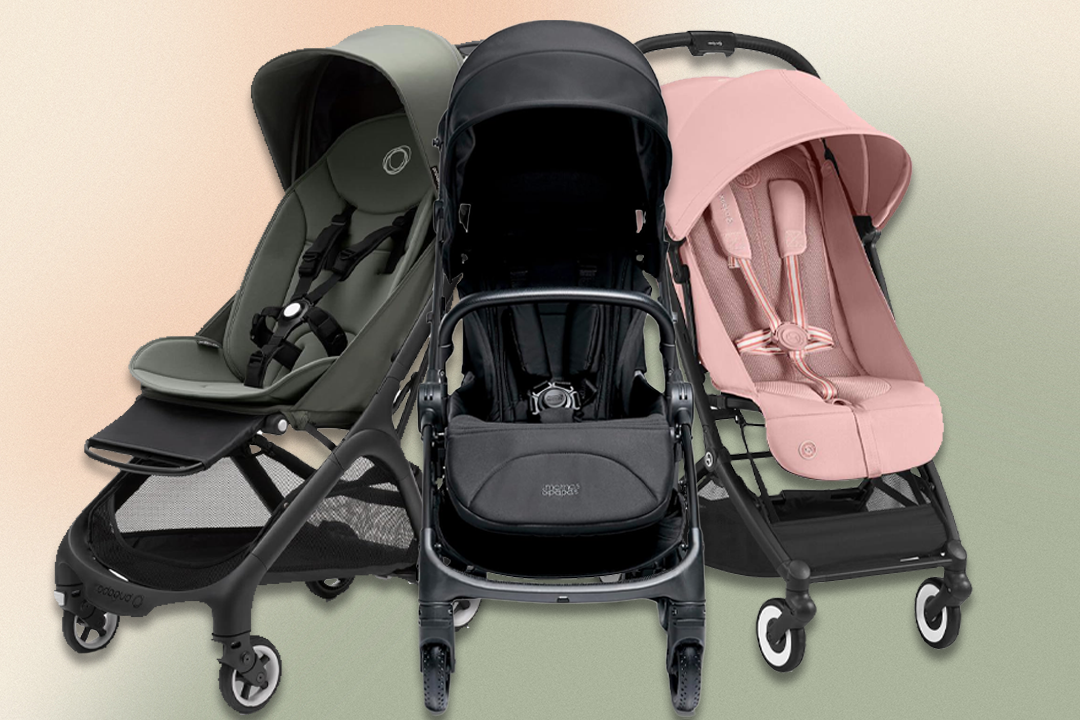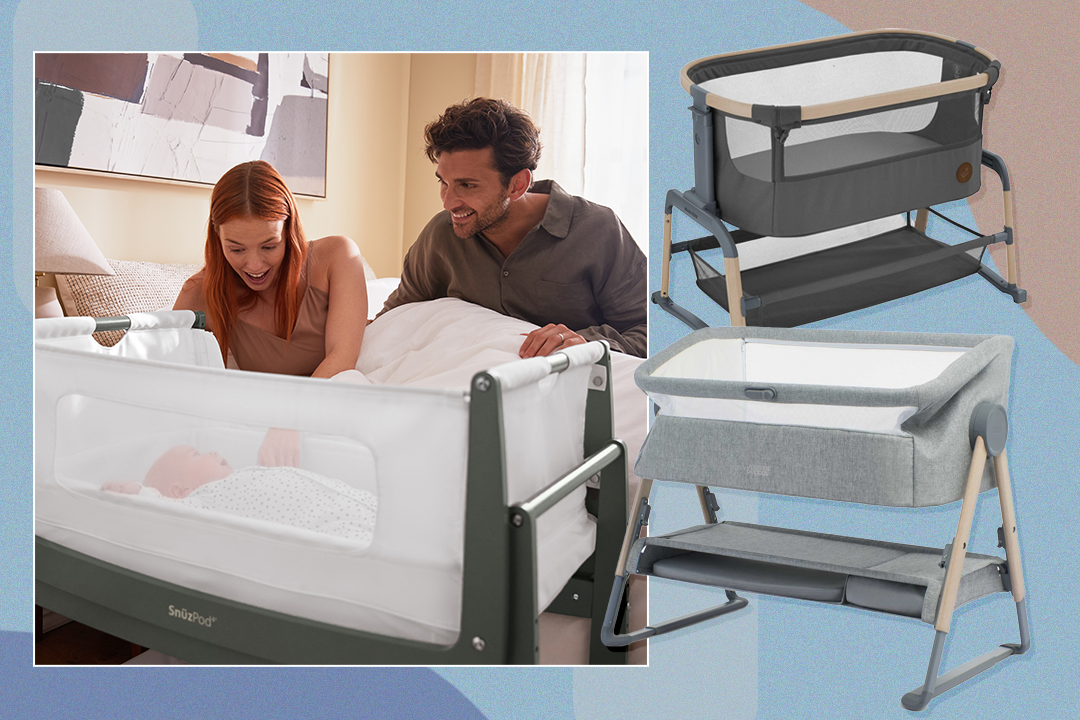The Independent's journalism is supported by our readers. When you purchase through links on our site, we may earn commission. Why trust us?
11 best car seats to keep your child safe and secure
Steer yourself in the direction of one of these car seats

A good car seat is one of the most important – and likely one of the most expensive – purchases you’ll make once you know you’ve got a baby on the way. It can also be one of the most confusing things to buy, with dozens of makes and models on the market and some confusing safety regulations to consider.
We recommend that you spend a lot time researching a car seat. After all, it’ll keep your baby safe on every journey. You’ll need one from the very first day of your baby’s life, so you can bring your new bundle of joy home from the hospital. While plenty of baby essentials can be bought second-hand, a car seat is one purchase that should be brand new - so you can be certain it’s never been in an accident. If it has been – or you suspect it has been – it should be replaced immediately.
A car seat is designed to absorb shock in case of a crash, and to hold your baby snugly but comfortably in place while you’re driving. They’re also required by law. In the UK, children must use a car seat until they’re 12 years old or 135cm tall, whichever comes first. Car seats must be rear-facing until your child is more than 15 months old – after that, they can be forward-facing, but rear-facing seats have been proven to be safer, whatever the age of your child.
Car seat sizes are either based on your little one’s height or weight. Only EU-approved height-based or weight-based child car seats can be used in the UK. Height-based car seats have a label showing a capital ‘E’ in a circle and ‘R129’. Weight-based car seats have a label showing a capital ‘E’ in a circle and ‘ECE R44’. Make sure your new purchase meets one of these safety standards – the height-based R129, also referred to as iSize, is considered the safest, and we’d recommend picking this regulation.
Don’t forget to check your new seat fits in your car. Manufacturers usually have fitting lists on their websites, so you can see if the seat you like is compatible with your car’s make and model. Car seats can either be installed using a seat belt or ISOFIX. The former will work in any car with a three-point belt, while ISOFIX car seats have anchoring points on their base which fix into the anchorage points inside a compatible car. All cars manufactured after 2014 have ISOFIX.
The rest is personal preference. Some car seats are standalone seats, but others are part of a ‘travel system’, enabling you to swap car seats using one installed base as your baby grows, and pop the car seat on your buggy when you’re out and about. We join many parents in recommending a swivel seat. This saves your back and your patience when you’re popping your baby in and out of the car every day.
Good car seats are not cheap but it’s one of those bits of baby kit that is worth spending as much as you can afford. While some models come in at more than £500, we’ve also got a few more affordable options in our roundup.
The best car seats for 2025 are:
- Best overall – BeSafe beyond 360: £429, Simplysafecarseats.co.uk
- Best budget buy – Joie elevate: £55, Boots.com
- Best for babies – Nuna ARRA flex car seat: £250, Bambinosandbeyond.co.uk
- Best for less than £100 – Cosatto zoomi: £79.95, Amazon.co.uk
- Best for travel – Maxi-Cosi pebble 360 pro2: £207.99, Maxi-cosi.co.uk
How we tested
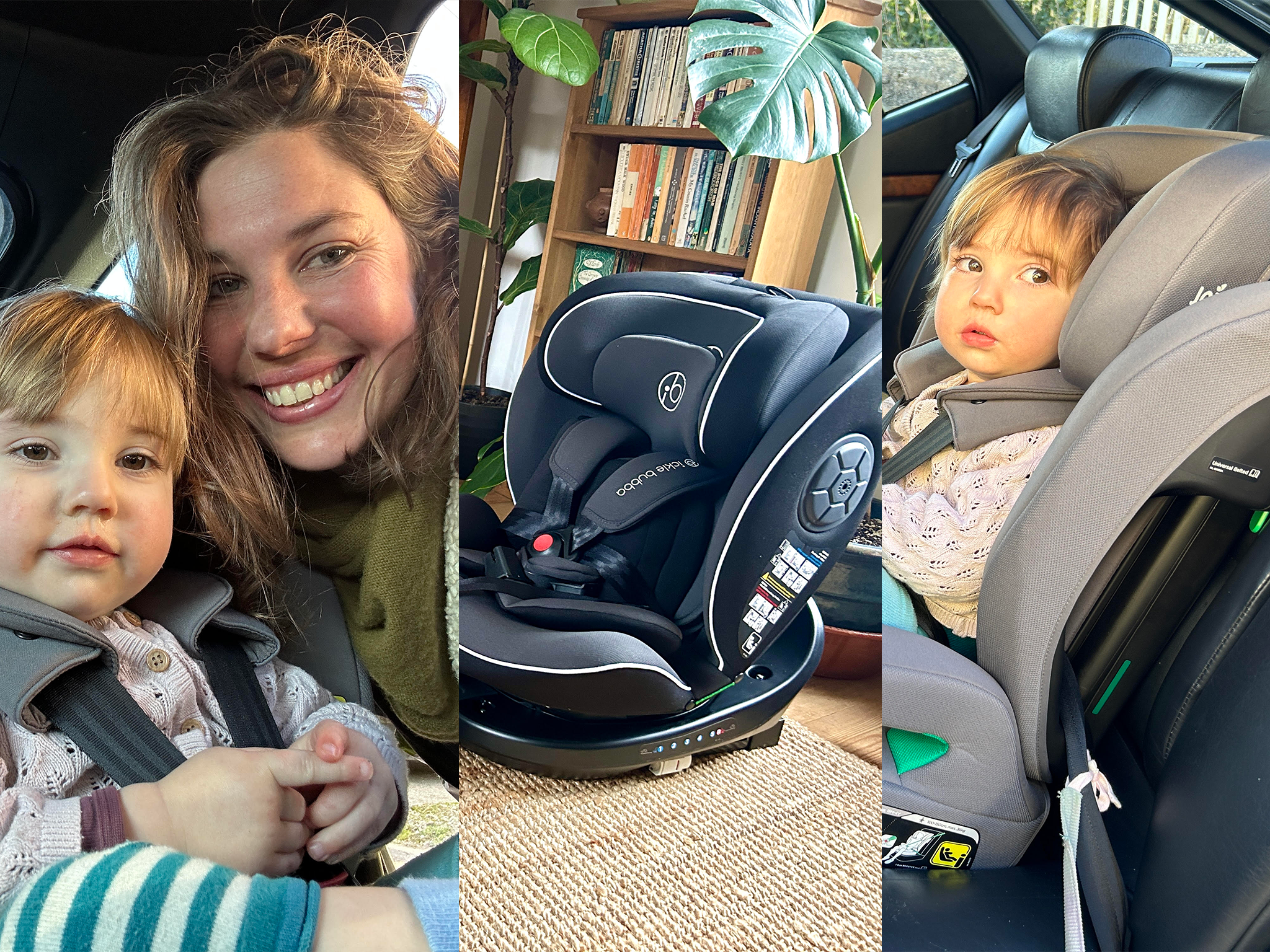
With a little help from our three-month-old and 18-month-old testers, we put a range of car seats through their paces. We looked for seats that adhere to UK safety standards and that provide comfortable options for little ones while being easy to use and adjust for parents. You’ll find details of our full testing criteria at the end of this guide.
1BeSafe beyond 360

- Best Overall
- Attachment ISOFIX
- Regulations R129
- Age range 61-125cm (or 22kg)
- Colour range Sea green, anthracite mesh, black, dark grey, soft breeze black and light grey
- Rotation 360°
- Why we love it
- Can be used until your child is six years old
This is the world's first rotating car seat approved for use up to six years old (or up to 125cm or 22kg, whichever milestone your child hits first). Travelling rear-facing has been proven to be safer than forward-facing, but if your child prefers to face forward after 15 months, this chair is easy to swivel with one hand. It also has reclined positions for nap time, extendable leg space as your kid grows, and is lightweight enough to carry comfortably. This is our top choice for an ISOFIX model.
2Joie elevate

- Best Budget
- Attachment Seatbelt
- Regulation R129
- Age range 15 minths to 3.5 years
- Colour range Black and grey
- Rotation No
- Why we love it
- Comfortable
- Washable cover
- Take note
- Fiddly installation
- Doesn't recline
Joie’s well-padded seat for toddlers can be used from 15 months to 3.5 years – perfect for when your child outgrows a baby seat. We like the quick-to-adjust headrest and harness and there’s good side protection. On top of that, there’s even a little cup holder for snacks. We found it a little fiddly to adjust the seatbelt, and this seat doesn’t recline for naps, but it is still a well-made yet relatively affordable option. The removable cover is easy to wash, too.

However, this won’t work for newborns, and it doesn’t swivel, so it’s a little awkward to unbuckle your child at the end of the journey.
3Thule elm

- Best For safety
- Attachment ISOFIX
- Regulations R129
- Age range Six months to four years
- Colour range Grey, green and black
- Rotation 360°
- Why we love it
- Safe and solid
- Good reclining option
- Take note
- Won't work for kids older than 3
Thule offers up the best of solid, safe Scandinavian design in the elm car seat. Designed for growing children, it boasts an adjustable headrest, deep side-impact protection, and comfy padding to keep your little one snugly in place. We found the ISOFIX installation easier and more intuitive than most car seats on test, and we liked the fact that you can text Thule for installation advice. This seat swivels, has good reclining options, and has a five-point seatbelt. The only drawback is that it won’t work for kids older than three. While not the cheapest option, the elm feels like it offers one of the safest and most secure rides on the market.
4Avionaut sky 2.0

- Best Rear-facing seat
- Attachment Seatbelt
- Regulations R129
- Age range 0-6
- Colour range Mint, pink, navy, black, and grey
- Rotation No
- Why we love it
- Can be used until your child is six years old
- Take note
- No swivel
If you don’t want to faff about with a different car seat every few years, Avionaut’s sky 2.0 is a great choice – it can be used from day one until your child is six. This design should last your family for years –if you swap to a toddler cushion as your baby grows they can keep travelling rear-facing, which is proven to be safer. This capacious seat is easily installed using a seatbelt, and it passes the Swedish Plus safety test, which goes above and beyond the R129. The seat also comes with a 10-year warranty, plus free replacement (for two years) if you’re in an accident. However, it doesn’t swivel, a feature you might expect at this price.
5Maxi-Cosi pebble 360 Pro2

- Best For travel
- Attachment ISOFIX or seatbelt
- Regulation R129
- Age range 0-18 months
- Colour range Brown, black, and grey
- Rotation Yes, with the family fix 360 pro (sold separately)
- Why we love it
- Easy to install
- Breathable
- Take note
- Only fits children up to 18 months
Maxi Cosi’s 360 range is popular for good reason – these lightweight, swivelling designs are easy to click in and out of the ISOFIX base and can be turned one-handed, which is very helpful when you’re wielding an energetic older baby in and out of the car. An update to the popular pebble 360 pro, the pebble 360 Pro2 now includes a mesh inlay, which is great for regulating your baby’s temperature. During testing, this was one of the seats we rated most highly for comfort and ease of use. It is also certified for use on an aeroplane, so your baby can travel safely in their own car seat. However, like the Inglesina Darwin infant recline below, this car seat won’t work for children older than 18 months, so you need to buy a whole new car seat after just a year and a half.

6Inglesina Darwin infant recline

- Best For newborns
- Attachment ISOFIX
- Regulations R129
- Age range From newborn up to 12 months
- Colour range 15 available
- Rotation Yes, with the Darwin 360 i-Size base (sold sperarately)
- Why we love it
- Perfect for newborns
- Easy to swivel
- Take note
- Can only be used until your baby is one year old
This car seat is perfect for the day you bring your child home from the hospital until their first birthday. This seat has been designed with newborns in mind, with angles that help them lie flat in a soft and comfy bamboo liner and the seat is easy to swivel when you’re popping your new arrival in and out of the car. After your baby is 12 months old, you can swap out to a bigger seat from the Darwin range and use the same ISOFIX base, but it’s expensive to buy twice when other products will adapt to babies as they grow.
7Doona X car seat and stroller

- Best All-in-one system
- Attachment ISOFIX
- Regulation R129
- Age range Newborn up to 85cm (roughly 2 years old)
- Colour range Green, blue, black
- Rotation No
- Why we love it
- Converts into a stroller
- Take note
- Heavy
The Doona X is a rear-facing seat that converts into a stroller, so there’s no need to transfer (or wake up) your baby when you arrive somewhere – you can just pop out the wheels from the car seat and go. The design is sleek and has plenty of great safety and comfort features – a five-point harness and padded sides keep your little one snugly in place, and we liked the adjustable headrest and faux-leather-padded handlebar. The newborn insert is made from bamboo and is lovely and soft (and, importantly, easy to wipe and wash), so it’s nice to use from day one. This is a clever, go-anywhere model that we keep spotting at airports, too.
In our full review of the Doona X, we found that it’s very heavy. At 8.3kg, this might not be one for single parents, and it’s a problem that will get worse as your kids grow heavier. It also doesn’t rotate.
8Nuna ARRA flex car seat

- Best For babies
- Attachment ISOFIX and seatbelt
- Regulation R129
- Age range From birth up to 13kg/24 months
- Colour range Cream (biscotti), black (caviar), brown (cedar)
- Rotation Yes, with BASE next (sold seperately)
- Why we love it
- Comfortable
- Soft linging
- Pram compatible
- Take note
- Can only be used until your baby is two years old
Launched this February, the new lightweight ARRA flex from Nuna is a great choice for babies. We thought this was one of the comfiest seats on test, guaranteeing a very cosy baby. There are three recline positions to help your little one get off to sleep and details such as a leatherette handle, removable canopy and a Merino wool insert that feels lovely and soft to touch. If your baby is fussy about car seats, this one might just help them relax and drop off to sleep. The ARRA flex is suitable for newborns and is compatible with travel systems, so you can pop it on a compatible pushchair when you’re on the go.
That said, it can only be used up until your newborn is 2 years old. It can’t rotate, so while you can fix it to a pushchair, it might be fiddly to remove from the car.
9Ickle Bubba radial 360 spin

- Best ISOFIX model under £200
- Attachment ISOFIX
- Regulation R129
- Age range From birth up to 12 years
- Colour range Grey
- Rotation 360°
- Why we love it
- Well-priced
- Take note
- Well-priced
Car seats can be painfully expensive but Ickle Bubba proves you can have a safe and easy to use ISOFIX design for less than £200. This swivelling design can be fully rotated and technically can be used until your child is 12 years old. However, we think kids over the age of four or five would feel restricted. We found the ISOFIX base simple to install, and we liked the fact that your baby can be rear-facing until they’re four years old.

10Cosatto zoomi

- Best For less than £100
- Attachment Seatbelt
- Regulation R44
- Age range Nine months to 12 years
- Colour range Unicorn land, beep beep, charcoal lighthearted, cosatto carnival, dragon kingdom, mister fox, paper petals, pretty flamingo, rev up
- Rotaton No
- Why we love it
- Adjustable harness and headrest
- Take note
- Not as versatile as claimed
- R44 safety - safe to use, but there are more recent standards
Proving car seats don’t have to cost the earth – or look boring – the zoomi is bright, fun, functional, and costs less than £100. Seven bright designs, ranging from foxes to unicorns, will keep kids interested during car trips. The company claims that the different inserts mean that this seat is suitable for little ones aged from nine months to 12 years. However, those aged less than 15 months are not advised to face forward, and we think it will only fit kids up to around five. The harness and adjustable headrest are great, too. This is a good budget seatbelt option for children who are more than 15 months old.
11Joie i-spin 360

- Best Car seat for value
- Attachment ISOFIX
- Regulations R129
- Age range From birth to four years
- Rotation 360 degrees
- Why we love it
- Premium product at a great price
- Comes fully assembled
- Feels solid and safe
- Green-light fitting system provides peace of mind
- Take note
- The buckle can be fiddly
- The quick start guide could be clearer
We started using the Joie i-Spin 360 car seat with our newborn and we’ve been really impressed. Everything came fully assembled in the box, which was a massive help. We just took it out and placed it straight into the car. The only bit we had to attach was a side impact shield, which popped into place in mere seconds.
The seat itself is a bit heavy, but that’s to be expected for a seat that is suitable from birth up to four years. It feels solid and safe, too. I did run into a small issue figuring out how to extend the ISOFIX connectors. The quick start guide wasn’t very clear, but it turns out there’s an adjuster button that needs to be pressed, which wasn’t obvious at first. There is a QR code on the guide that links to the full instructions online, which would have helped but I didn’t have internet access at the time. Once I figured it out, the connectors clicked in easily and showed a green indicator when correctly positioned. The load leg works the same way and is simple to adjust, showing a green light when it’s fitted correctly, which is great for peace of mind.
Our baby looks comfortable in the newborn insert, without the need for adjustments. His head wasn’t hunched forward as much, compared with some other car seats we’ve seen. The head support is easy to adjust with a lever, and the recline feature is very smooth. Plus, the spin function is a total game changer if you haven’t used one before. It makes it so much easier to get your baby in and out of the seat, especially in a tight parking space.
The seat’s straps are nicely padded and seem comfortable for our newborn. The buckle does feel a bit awkward at first – you have to clip both parts in at the same time – but I’m sure that will become easier with practice.
- Reviewed by Chloe Hubbard
Your questions on car seats answered
What is the best car seat?
All of our top-rated car seats are safe and comfortable but the BeSafe beyond 360 is the perfect all-in-one chair that keeps your baby rear-facing until they are six years old. Meanwhile, Nuna’s ARRA flex stood out for babies and Joie’s elevate was our top budget pick.
How we selected the best car seats
We tested a wide range of car seats that adhere to UK safety standards. While reviewing each seat, we considered the following criteria...
- Comfort: From the overall design of the seats to the padded straps, we looked for models that offered a comfortable ride for our little ones.
- Durability: We looked for car seats that have been designed to stand the test of time as well as unfortunate accidents.
- Ease of installation: Simple instructions and intuitive designs always impress, so we assessed which car seats made installation easier.
- Adjustability: We also considered how easy it is to adjust the setup once your child is in place, to ensure a secure seat.
Why you can trust IndyBest reviews
Every single product featured in an IndyBest review has been tried and tested by one of our expert testers. Sian Lewis is an award-winning journalist who has written for IndyBest since 2020. With years of experience of testing products aimed at parents and children, Sian has previously brought readers her verdict on the best running buggies, kids’ attire and more.
For extra information about car seat safety standards and more, Fran Vaughan, managing director of Ickle Bubba, answered our questions...
Safety standards explained
Car seats used in the UK must adhere to two standards: ECE R129, which is the latest regulation, or ECE R44. You can choose which type you want to go with.
Car seats that adhere to ECE R129 are called iSize seats. These seats are fitted against your child’s height and ensure children are rear facing until they’re 15 months old. Rear-facing travel is optimal for babies and children because it offers more protection for their necks if a collision does occur. All iSize seats have Isofix as standard and have side-impact collision testing as part of the approval process.
ECE R44 seats are fitted based on your child’s weight. Many allow your child to face forward from 10 months, and some allow you to fit the seat using just a seat belt. This is handy if your car doesn’t have Isofix fixings. These seats aren’t required to have side-impact collision testing as standard.
What is Isofix?
Isofix is a way for a car seat to be secured into your car. It’s designed to make fitting the seat easy, as research shows many older car seats are fitted incorrectly, which makes the seat unsafe. Car seats with Isofix have connectors that come out of the back of the seat and slide into your car’s Isofix fitting points. Many seats then have a green indicator or lights (usually in the base) to let you know the seat is securely fitted in place. Isofix anchors the car seat to the chassis of the car, locking it in place more securely than if you were to use just a seat belt. Often an additional top tether or support leg is then used to stop the seat tipping forward.
How do I know when my child is too big for their car seat?
Figuring out when your child is ready for the next size of car seat is relatively straightforward. With iSize seats, it’s based on height:
- iSize baby – suitable from birth to 85cm (this tends to be around 15-18 months)
- iSize baby and toddler – suitable from birth to 105cm (this is around four years of age)
- iSize toddler – suitable from 65cm to 105cm (around 15 months to four years)
- iSize child – suitable from 100cm to 135cm (around four years to 12 years of age, when they aren’t required to travel in a seat any more)
For the R44 seats, seat sizes are based on weight and go up in groups:
- Group 0/0+ – suitable from birth to 13kg (up to about 15 months)
- Group 0+/1 – suitable from birth to 18kg (up to about 4 years)
- Group 0+/1/2 – suitable from birth to 25kg (up to around 7 years
- Group 1 – suitable from 9kg up to 18kg (from about 9 months to 4 years)
- Group 1/2/3 – suitable from 9kg up to 36kg (from about 9 months to 12 years of age)
- Group 2/3 – suitable from 15kg to 36kg (from about 9 months to 12 years of age)
- Group 3 – suitable from 22kg to 36kg (from about five years to 12 years of age)
Your child may not fit the seat based on their age. It really depends on their weight or height, so it’s important to measure or weigh your child to check.
Multi-group seats are great for those who have different age children using the seat, such as childminders or grandparents.
Why are car seats for babies rear-facing?
It’s generally much safer. When babies are sitting in a rear-facing car seat, the shell acts as a protective shield and absorbs any force, should there be an accident. As a result, the impact would spread over the whole area of the child's back, neck and head, putting significantly less strain solely on the baby’s neck.
What age should kids start to sit forward-facing?
Legally, kids should only turn forward-facing once they weigh 9kg and at this stage they will sometimes require a new car seat, depending on the model. However, many studies have recommended children should stay rear-facing for longer than the legal requirement and in some cases up to four years old.
Will I need a base to fit the seat into my car?
When it comes to safety testing, car seats in the UK have to conform to one of two standards: ECE R129 is the newest Europe-wide regulation, known as i-Size. This runs alongside the existing ECE R44 regulation, and parents can choose either seat type to use.
i-Size uses your child’s height for fitting, and in order for a car seat to be i-Size compatible, it must be used with an Isofix base. Other car seats that far under the ECE R44 regulation are split into groups based on weight.
What tips do you have for buying car seats at the various different stages?
Monitor the weight and height of your child regularly, to ensure you are using the correct car seat. Don’t rely on visual indicators only.
What’s the most important thing to look for in a child’s car seat?
Check that it meets ECE safety standards. A sticker is normally located on the car seat to indicate this. Also, make sure the car seat is compatible with your vehicle. Most are universal fitting, but it's best to check before you purchase.
To keep baby comfy and supported as they sleep, check out our pick of the best bedside cribs











